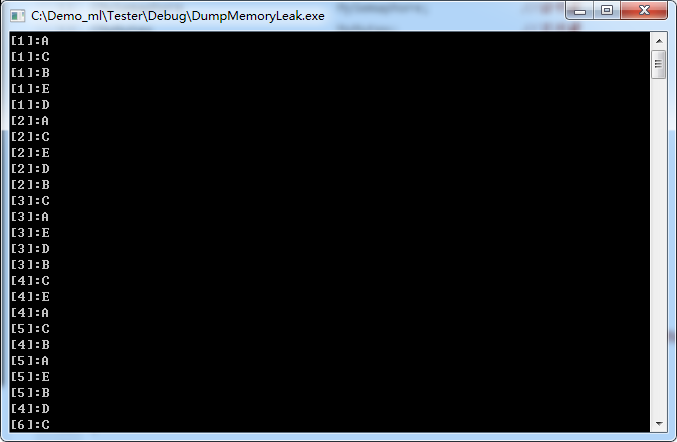标签:linux环境 控制 etc get argv null 资源 att ini
#include <windows.h> CRITICAL_SECTION cs;//定义临界区对象 InitializeCriticalSection(&cs);//初始化临界区 EnterCriticalSection(&cs);//进入临界区 LeaveCriticalSection(&cs);//离开临界区 DeleteCriticalSection(&cs);//删除临界区
#include <Windows.h> #include <string> #include <iostream> CRITICAL_SECTION cs; DWORD WINAPI Fun(LPVOID lpParamter) { std::string strPrint((const char*)lpParamter); int iRunTime = 0; while(++iRunTime<10) { EnterCriticalSection(&cs); std::cout <<"["<< iRunTime <<"]:"<< strPrint.c_str()<<std::endl; LeaveCriticalSection(&cs); Sleep(1); //离开临界区后线程进行休眠,其它线程进入临界区的概率大大降低,所以需要短暂休眠。 } return 0; } int _tmain(int argc, _TCHAR* argv[]) { InitializeCriticalSection(&cs); //创建五个子线程 std::string str1 = "A"; std::string str2 = "B"; std::string str3 = "C"; std::string str4 = "D"; std::string str5 = "E"; HANDLE hThread1 = CreateThread(NULL, 0, Fun, (void*)str1.c_str(), 0, NULL); HANDLE hThread2 = CreateThread(NULL, 0, Fun, (void*)str2.c_str(), 0, NULL); HANDLE hThread3 = CreateThread(NULL, 0, Fun, (void*)str3.c_str(), 0, NULL); HANDLE hThread4 = CreateThread(NULL, 0, Fun, (void*)str4.c_str(), 0, NULL); HANDLE hThread5 = CreateThread(NULL, 0, Fun, (void*)str5.c_str(), 0, NULL); //关闭线程 CloseHandle(hThread1); CloseHandle(hThread2); CloseHandle(hThread3); CloseHandle(hThread4); CloseHandle(hThread5); getchar(); DeleteCriticalSection(&cs); return 0; }
测试效果

在Linux环境下,没有Windows下的临界区的概念,但是也可以利用互斥量实现该功能。
#include <pthread.h> int pthread_mutexattr_init(pthread_mutexattr_t *attr); /*初始化函数*/ int pthread_mutexattr_destroy(pthread_mutexattr_t *attr);/*去初始化函数*/ int pthread_mutex_lock(pthread_mutexattr_t *attr)/*加锁*/ int pthread_mutex_unlock(pthread_mutexattr_t *attr)/*解锁*/
临界区与互斥体的区别:
标签:linux环境 控制 etc get argv null 资源 att ini
原文地址:https://www.cnblogs.com/zhongqifeng/p/14888911.html